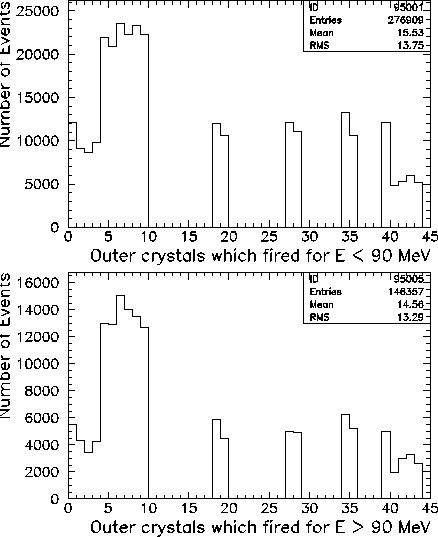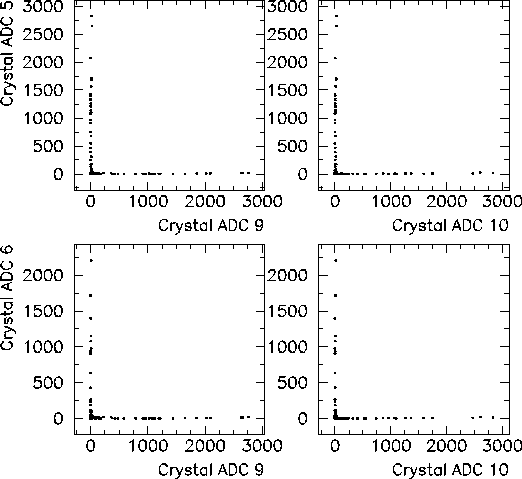
Figure 7.8: Histograms showing count rates in outer detectors, for CsI Sum

Figure 7.8: Histograms showing count rates in outer detectors, for CsI Sum ![]() (top panel) and CsI Sum
(top panel) and CsI Sum ![]() (bottom). A detector is determined to have fired if its
ADC value is greater than a predetermined
threshold (0.2 MeV). Detectors four through nine show an abnormally high counting rate,
particularly in the bottom panel, when the total energy deposited into the calorimeter
is greater than 90 MeV.
(bottom). A detector is determined to have fired if its
ADC value is greater than a predetermined
threshold (0.2 MeV). Detectors four through nine show an abnormally high counting rate,
particularly in the bottom panel, when the total energy deposited into the calorimeter
is greater than 90 MeV.
In order to check for correlations between the noisy detectors, a subset of their ADC values have been plotted against each other in Fig. 7.9. No correlation is apparent.

Figure 7.8: ADC value correlation histograms between noisy detectors for the one arm trigger
configuration. No correlation between these detectors is apparent, which rules out the
possibility of cross talk.
Finally, one can inspect the raw ADC spectra, above 0.2 MeV, of two noisy outer detectors and two normal outer detectors in Fig. 7.10. The low energy noise is apparent in the spectra of detectors 8 and 9.

Figure 7.10: CsI ADC spectra 0.2 MeV above the pedestal for two normal
detectors (top panels) and two noisy detectors (bottom panels) for the single arm trigger
configuration.